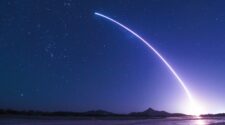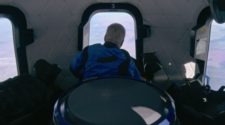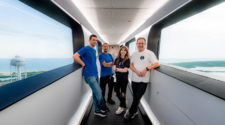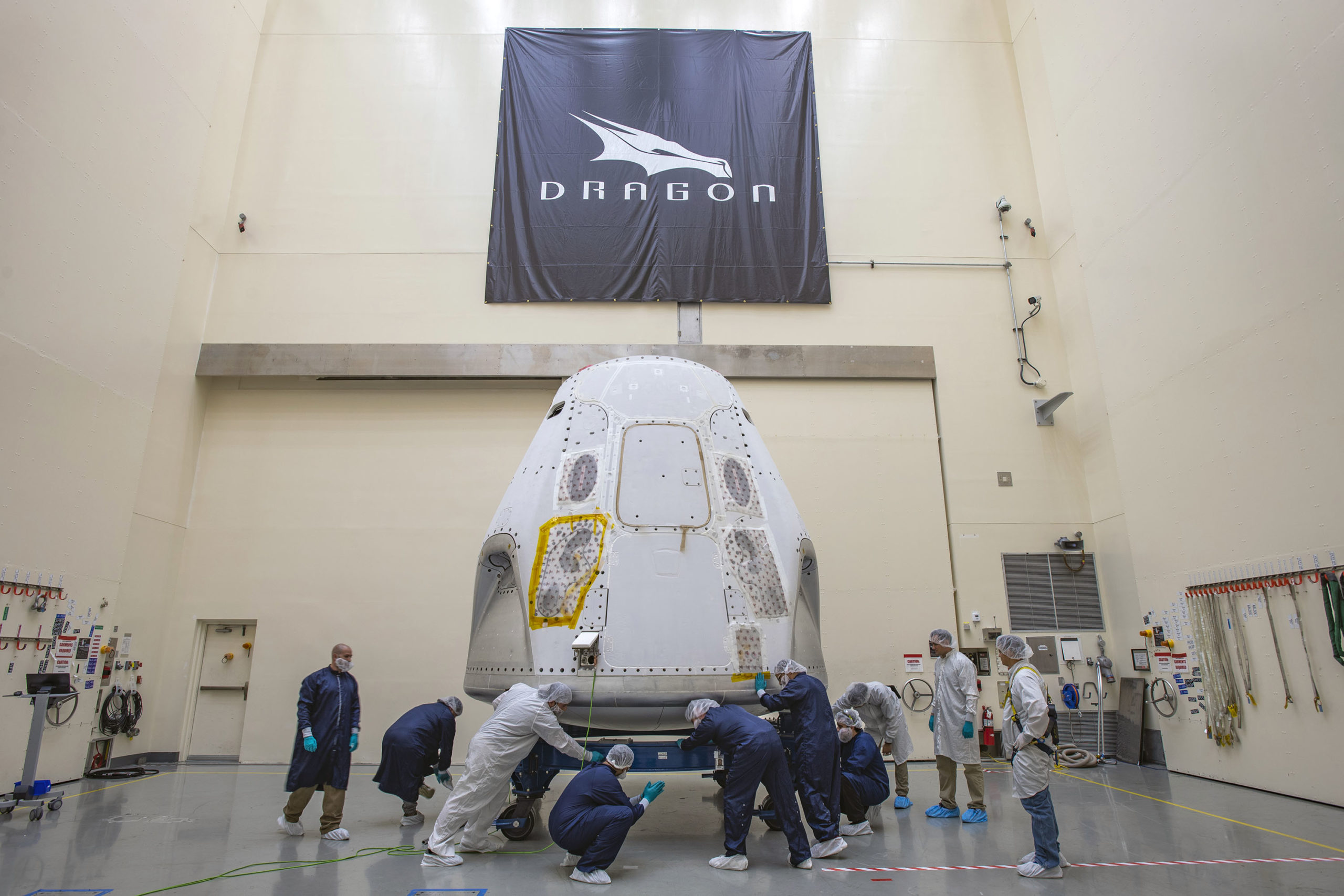
The United States is drawing closer to launching humans from American soil once again with the arrival of the newest SpaceX Crew Dragon spacecraft at NASA’s Kennedy Space Center in Florida. The capsule is slated to launch with a crew of two NASA astronauts on the Demo-2 mission sometime this spring, marking the first time an astronaut has launched on an American-made spacecraft since the final flight of the Space Shuttle program on July 8, 2011.
“NASA and SpaceX are preparing for the company’s first flight test with astronauts to the International Space Station as part of the agency’s Commercial Crew Program,” NASA said in a statement.
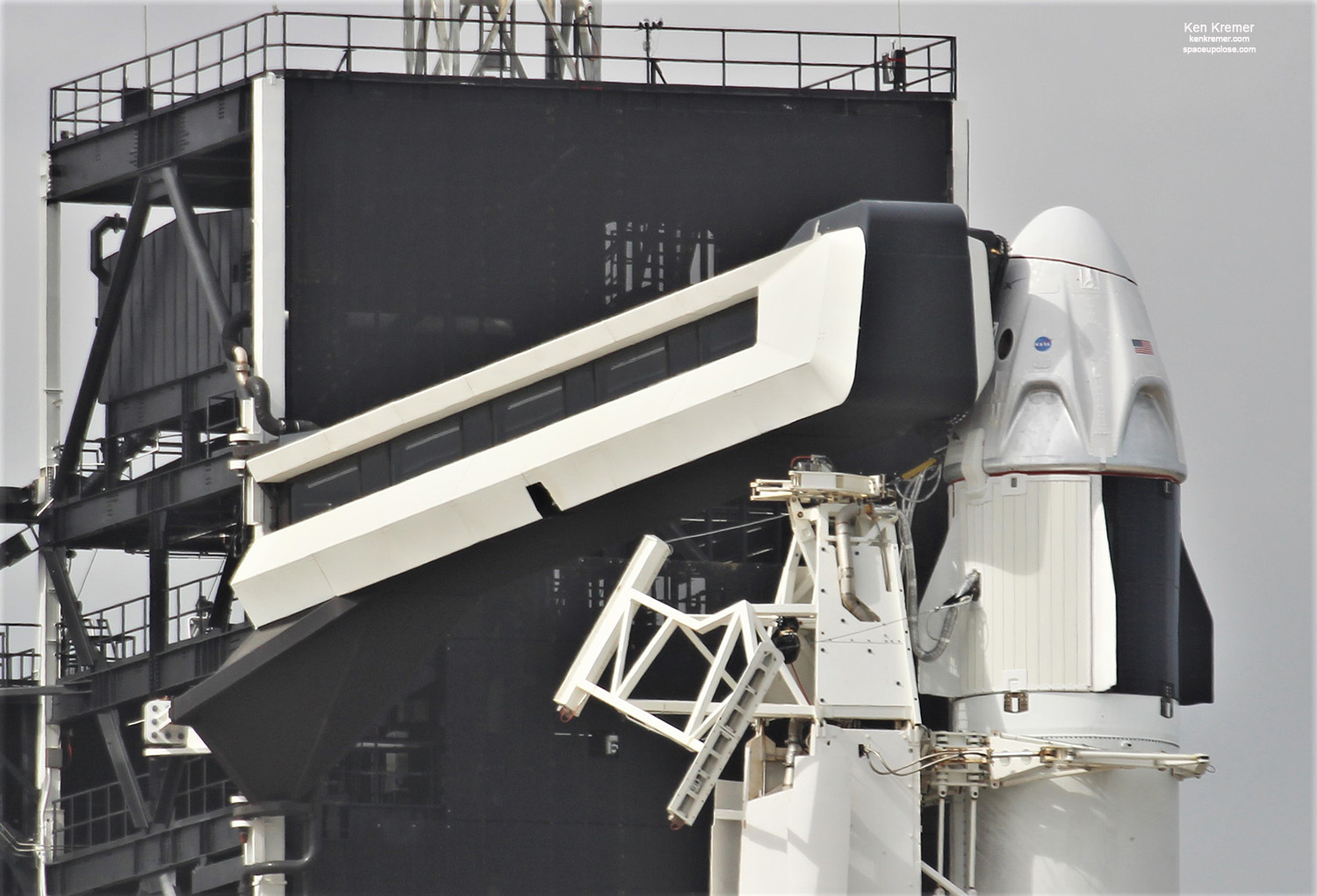
The Demo-2 Crew Dragon was shipped from the SpaceX manufacturing factory in Hawthorne, California and arrived at the Florida Space Coast on Thursday, Feb. 13. The space capsule is now undergoing final testing and prelaunch processing in a SpaceX facility on nearby Cape Canaveral Air Force Station.
Barring unforeseen issues the Demo-2 mission will launch in the second quarter of 2020 – potentially as soon as May – thereby restoring America’s human spaceflight capabilities with the launch of US astronauts from US soil onboard a US rocket. The SpaceX Crew Dragon will launch atop a SpaceX Falcon 9 rocket with NASA astronauts Bob Behnken and Doug Hurley from historic Launch Complex 39A from NASA’s Kennedy Space Center in Florida.
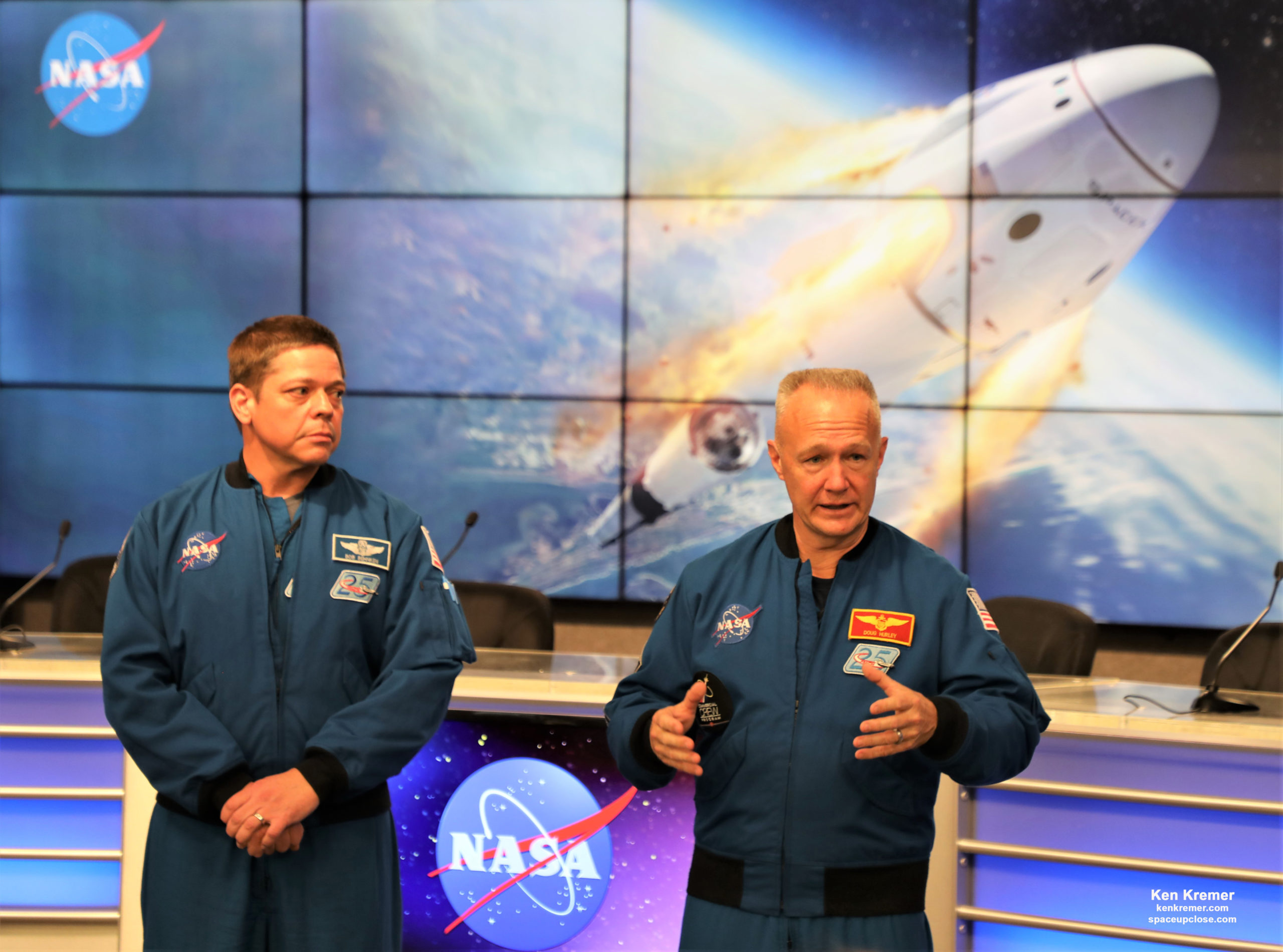
“Crew Dragon in Florida ahead of its flight to and from the @space_station with @NASA astronauts @AstroBehnken and @Astro_Doug onboard!” SpaceX tweeted on Feb. 14.
Hurley was the pilot on the last manned spaceflight mission flown from American soil – the STS-135 mission of Space Shuttle Atlantis that lifted off on July 7, 2011, from historic Launch Complex 39A – the same pad from which Demo-2 will blastoff.
Two days earlier, SpaceX had tweeted a photo of hundreds of SpaceX employees posing with Crew Dragon just before it departed the company’s Hawthorne, California factory for the launch site in Florida.
SpaceX employees with Crew Dragon before it departed our Hawthorne factory for the launch site in Florida – one step closer to returning human spaceflight capabilities to the United States! pic.twitter.com/ekaVJf9HDt
— SpaceX (@SpaceX) February 12, 2020
The path to blastoff of Demo-2 was paved following the success of the In-Flight Abort (IFA) test earlier this year. On Jan 19, SpaceX successfully launched the Crew Dragon vehicle on the In-Flight Abort (IFA) demonstration test which counts as its final major flight test before it begins carrying NASA astronauts to the International Space Station.
The Falcon 9 rocket was failed on purpose to prove that the launch escape system on the Crew Dragon capsule would fire its emergency abort thrusters to push the spacecraft away from a catastrophic rocket failure in a split second and successfully save the astronauts lives while also accomplishing a parachute-assisted splashdown safely in the ocean.
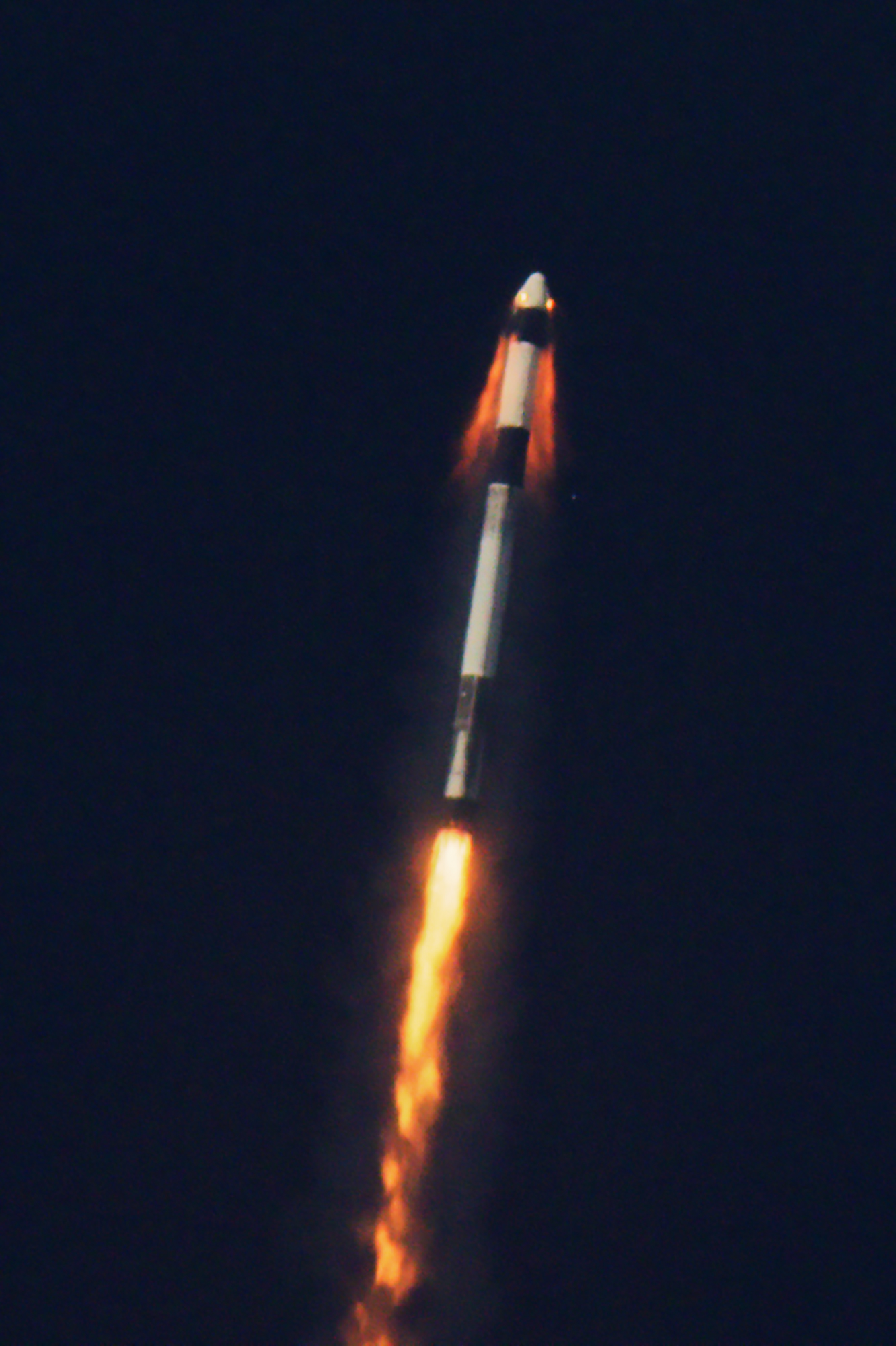
Crew Dragon’s first non-piloted test flight to the ISS launched on March 2, 2019. The Crew Demo-1 flight into orbit went smoothly with the spacecraft arriving and docking with the space station just 27 hours after lifting off from LC-39A in Florida. The capsule undocked five days later and splashed down in the Atlantic Ocean where it was recovered by SpaceX’s recovery ship Go Searcher.
The same capsule was planned to be used for the IFA demonstration test, however, on 20 April 2019, it was unexpectedly destroyed during a mishap when test firing the SuperDraco engines at SpaceX’s Landing Zone 1, located at Cape Canaveral Air Force Station.
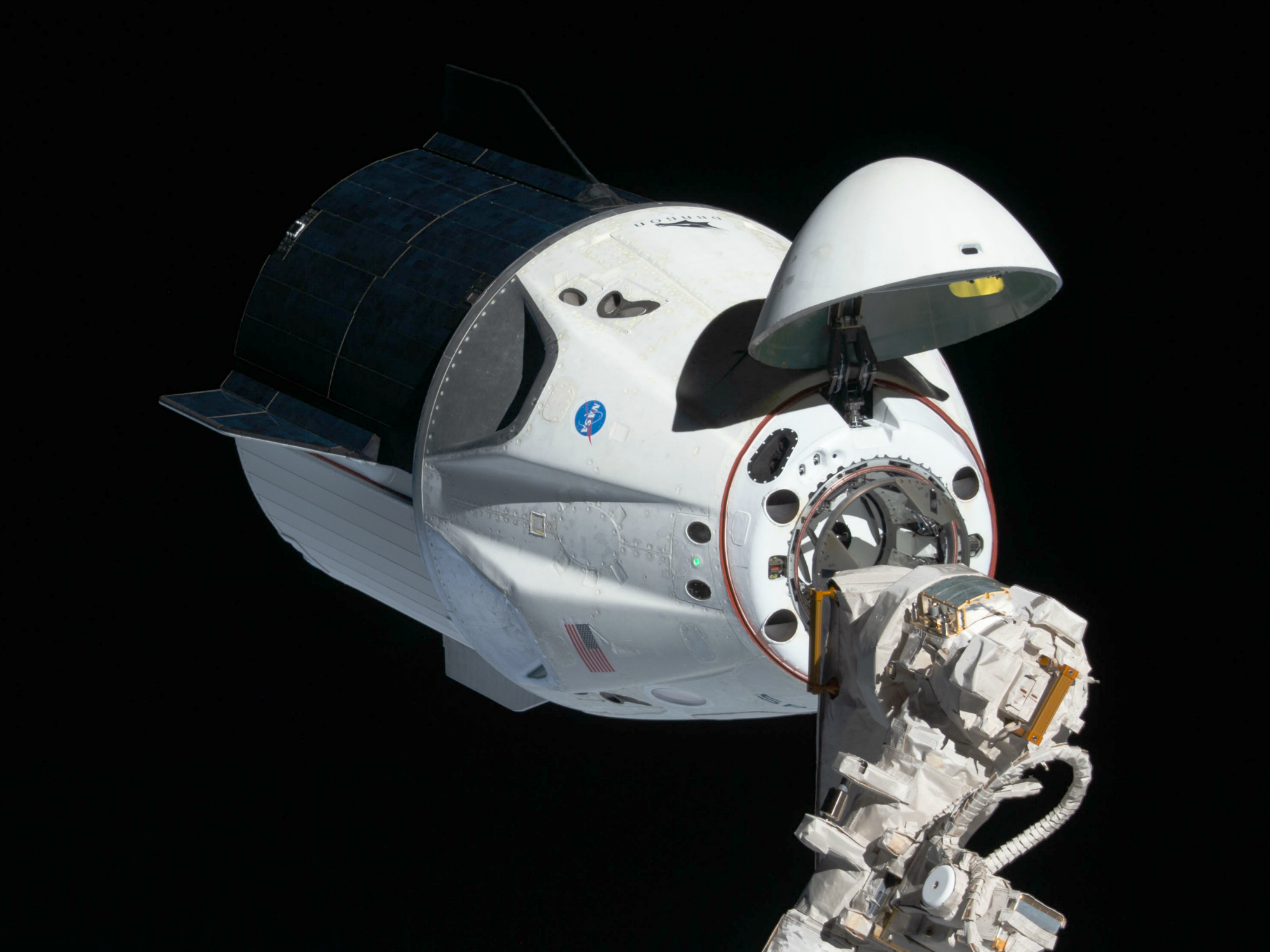
Still, SpaceX’s Crew Dragon is almost certainly poised to restore American crewed spaceflight before the competing Boeing Starliner crew spaceship. Boeing had issues during the critical uncrewed Orbital Test Flight (OFT) mission in December. The spacecraft failed to dock at the ISS after launch due to an error in the elapsed timing controller. It was later revealed that the Starliner service module could have collided with the crew module during separation on return to Earth due to software failures only discovered at the last moment.
Both Crew Dragon and Starliner have been developed with funding under the auspices of NASA’s Commercial Crew Program.

